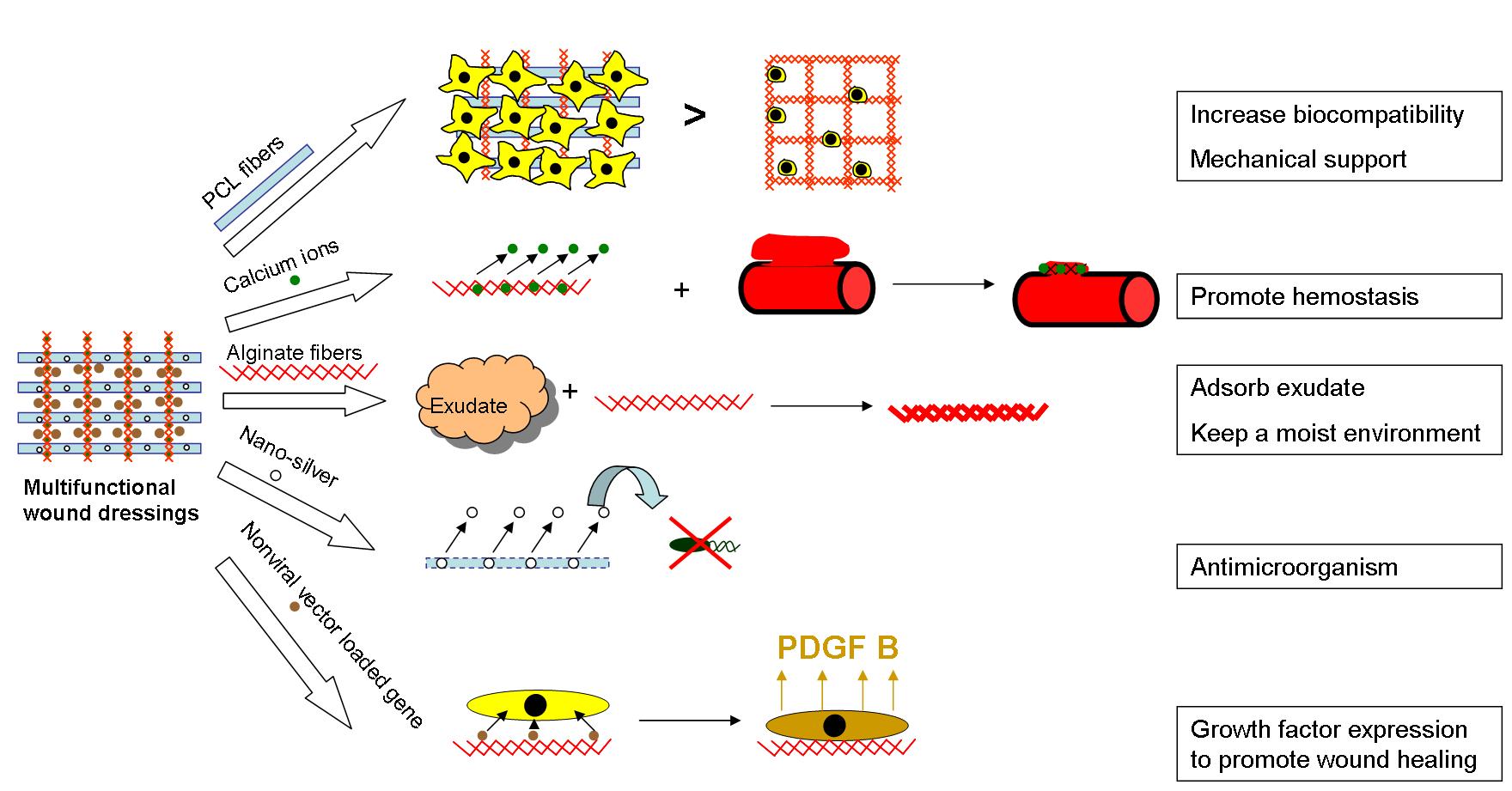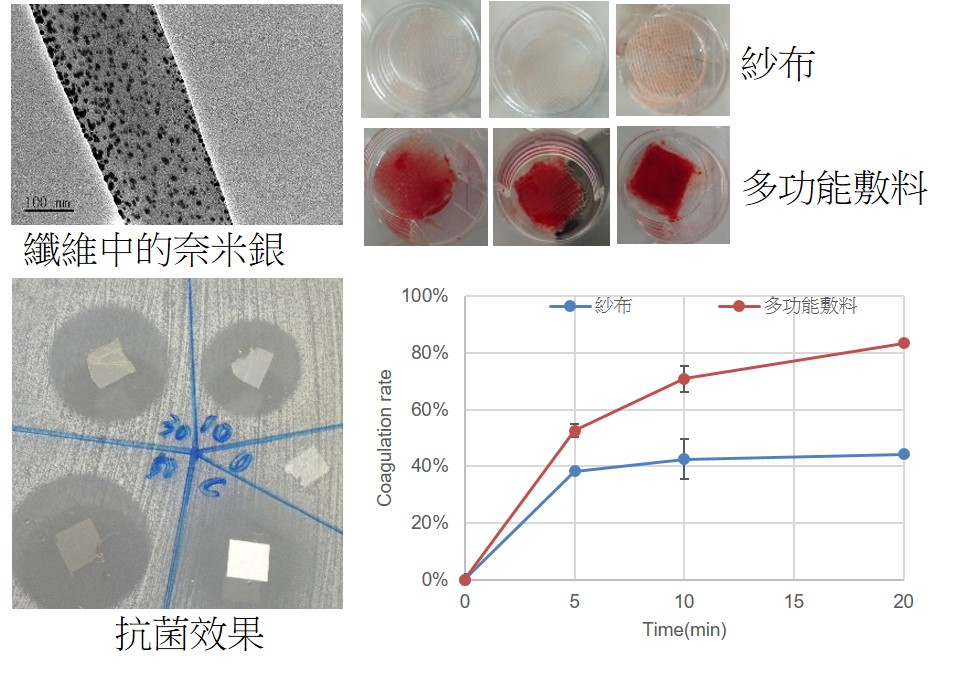| Technical Name | Multifunctional Composite Dressing to Promote Healing of Chronic Wounds | ||
|---|---|---|---|
| Project Operator | National Central University | ||
| Project Host | 胡威文 | ||
| Summary | Calcium alginate and polycaprolactone (PCL) was coelectrospun as composite nanofibers. Calcium alginate fibers were used as highly absorbent dressings to provide a moist environment in wound sites. On the other hand, PCL was applied to increase mechanical strength and protein adsorption. Silver nanoparticles were embedded in PCL fibers to inhibit the growth of microorganism. Plasmid DNA encoding platelet-derived growth factor (PDGF) was delivered from composite fibers to in situ transfect cell for continuously expressing PDGF to promote tissue regeneration. Calcium ions in alginate fibers can be released to wound sites to accelerate hemostatsis. These calcium-insufficient alginate fibers gradually degraded with time to allow cell infiltration, enhance cell adhesion onto PCL fibers, and eventually improve tissue regeneration. This comprehensive composite dressing provides an ideal solution to facilitate diabetic-induced chronic wounds. |
||
| Scientific Breakthrough | Our multifuncation wound dressings compressively consider the clinical requirements of chronic wound healing. Furthermore, the chemical and physical properties of composite fibers can be easily tuned by adjusting the fiber ratios. And their biodegradable properties are also beneficial to cell infiltration to guide tissue regeneration. Therefore, this multifuncationl dressing should be beneficial to the field of gene therapy, and will be beneficial to the diabetic wounds treatment. |
||
| Industrial Applicability | Different from the conventional wound dressings which only physically protect shallower wound, the deeper wounds in diabetic ulcer are always more necrotic which need the induction of growth factor to facilitate tissue regeneration. In addition, infection control is extremely important to the prolonged wound healing. These clinical requirements all indicate that a new generation of wound dressing specific to chronic wound healing is highly demanded. Growth factors and antibiotics have been delivered from wound dressing, but their instabilities hinder clinical applications. Therefore, our composites fibers load nucleotides and AgNP because of their high stability, which is beneficial to the long-term storage and transportation. Therefore, it should be highly practical to be commercialized. |
||
| Keyword | composite electrospun nanofibers wound dressing nano-silver platelet-derived growth factor B gene delivery | ||
- huweiwen@cc.ncu.edu.tw
other people also saw







